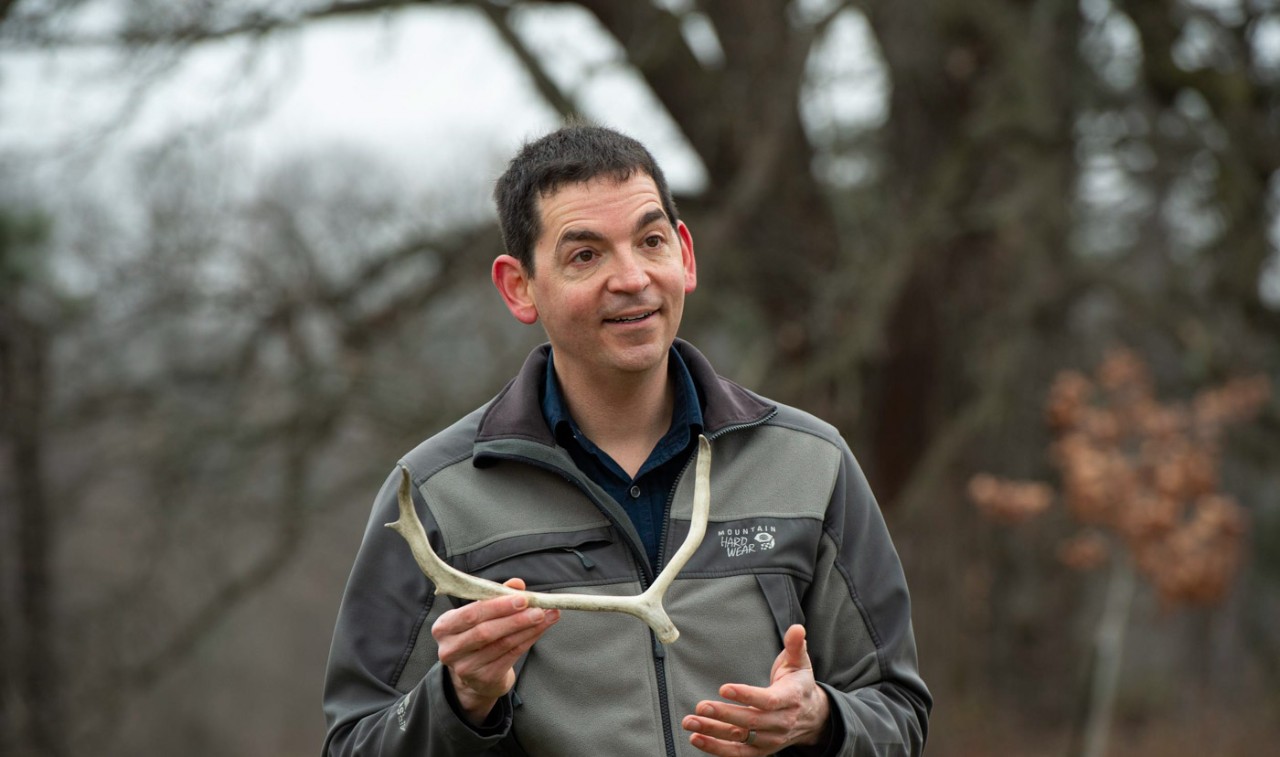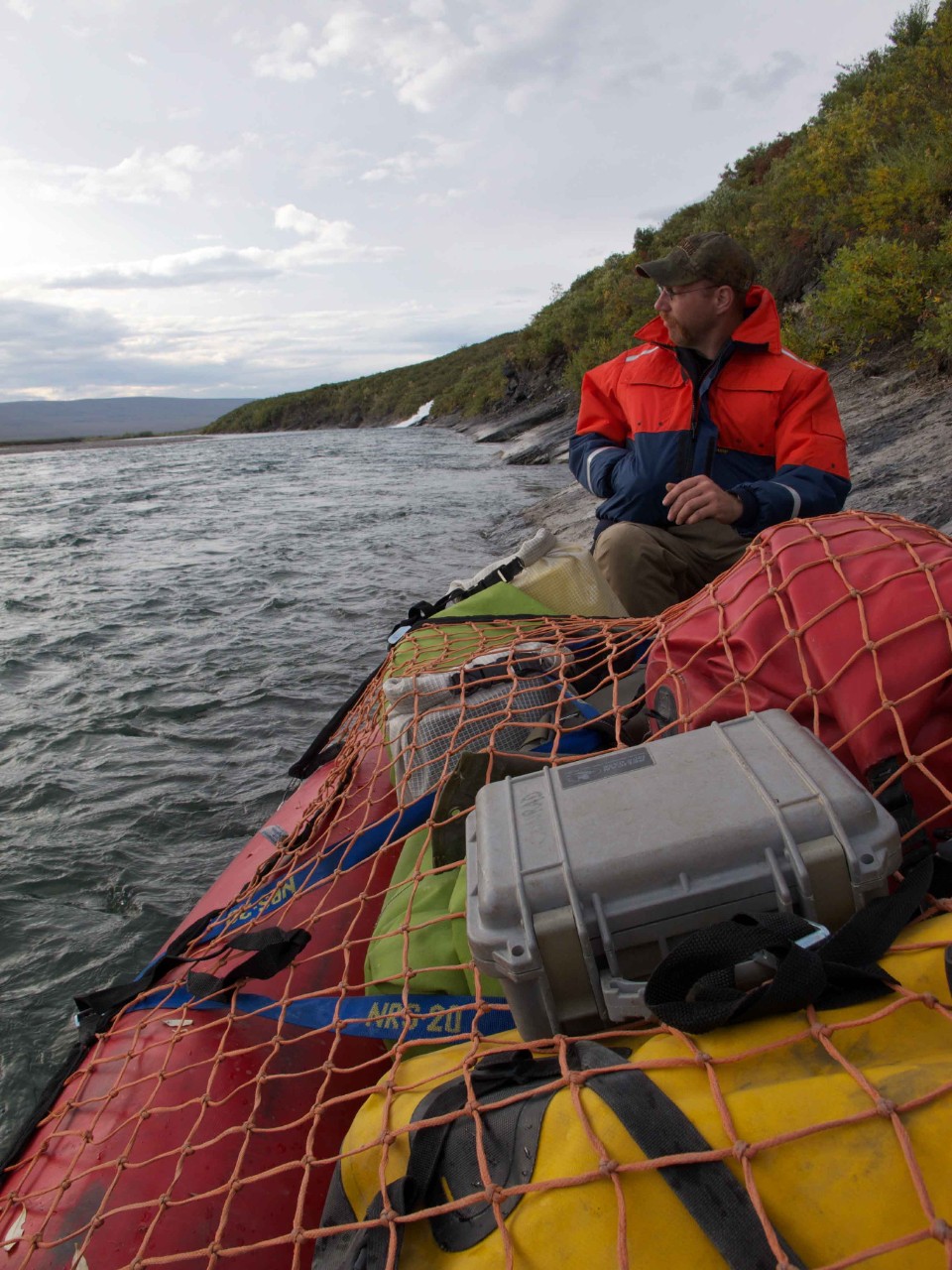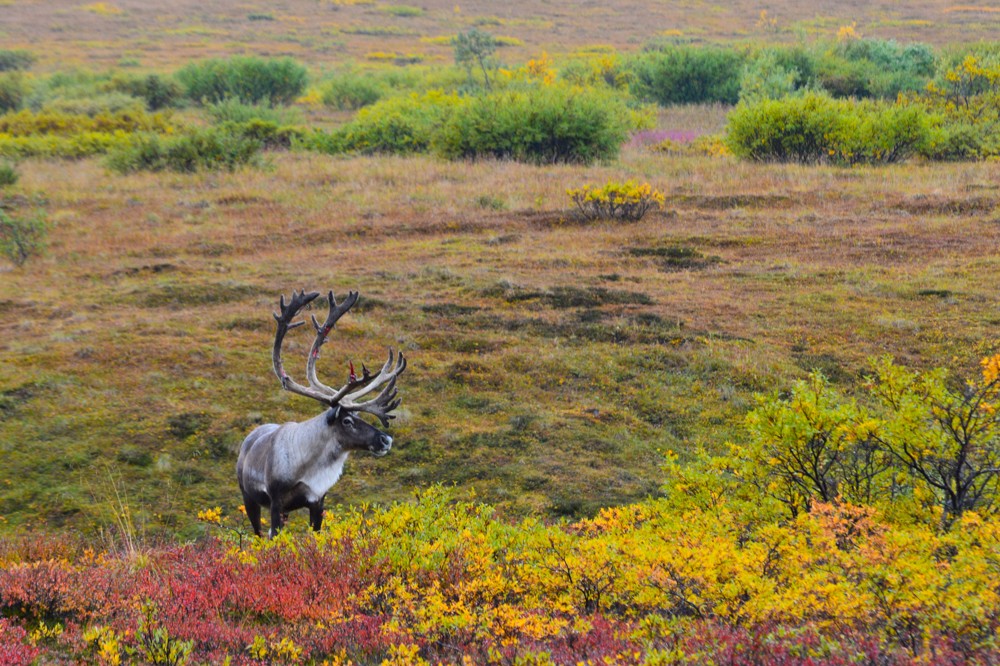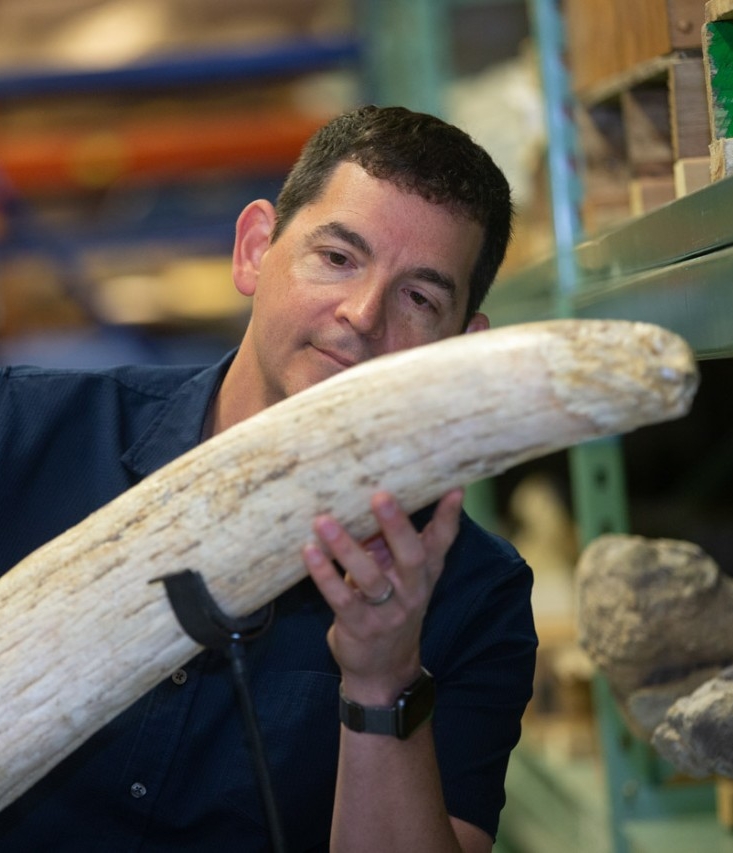
Smithsonian: How conservation paleobiology helps restore ecosystems
UC geosciences professor talks about tracking ancient caribou migrations
Smithsonian magazine highlighted an ongoing research project led by a University of Cincinnati ecologist that is tracking ancient caribou across thousands of years and hundreds of miles of Arctic tundra.
Joshua Miller, an assistant professor of geosciences in UC's College of Arts and Sciences, has spent years exploring the wilderness of the Arctic National Wildlife Refuge to collect ancient antlers, some of which have sat on the tundra undisturbed for thousands of years.

Researchers traveled rivers by inflatable raft to survey the Coastal Plain for shed caribou antlers in Alaska's Arctic National Wildlife Refuge. Photo/Joshua Miller
He and his research partners explore river valleys using a rigid inflatable boat before a bush plane picks them up on the coast of the Beaufort Sea.
Miller discovered that caribou have been using the same calving grounds to give birth to their babies for more than 3,000 years.
Female caribou shed their antlers within days of giving birth, leaving behind a record of their annual travels across Alaska and Canada’s Yukon that persists on the cold tundra for hundreds or even thousands of years. Researchers recovered antlers that have sat undisturbed on the arctic tundra since the Bronze Age.
The antlers represent a time capsule of the animal's life, diet and travels across the landscape that Miller and his research partners are unlocking using isotopic analysis.
His research demonstrates how important this part of the refuge is to caribou and highlights the longstanding and historic reliance on the migration among native people who hunt caribou for subsistence.
“You really can walk on the landscape today and get some essence of what caribou were doing thousands of years ago,” Miller told Smithsonian.
But his research shows how generations of caribou dating back millennia in Alaska have relied on the same summer and spring calving grounds.
While the enormous Porcupine herd's summer range has remained stable over time, Miller found that the Central Arctic herd's summer range shifted inland when intense oil development began in the 1980s.
Featured image at top: UC Assistant Professor Joshua Miller holds up a caribou antler he collected in the Arctic National Wildlife Refuge. Photo/Colleen Kelley/UC

The Porcupine caribou herd has been using the same calving grounds for thousands of years, according to researchers from the University of Cincinnati. Photo/Lucian Provines
More UC Geosciences in the News

UC paleobiologist Joshua Miller studies a mastodon tusk. Photo/Andrew Higley/UC Marketing + Brand
- Yahoo! News: Eyeing the past to restore today's ecosystems
- Alaska Magazine: Search for ancient antlers
- Knowable Magazine: Conservation paleobiology
- Vigour Times: Using fossils to prepare for changing climate
- Billings Gazette: Old antlers help date caribou calving grounds to 3,000 years
Related Stories
Cincinnati researchers want to know if MRIs can work better
June 28, 2024
WVXU and the Cincinnati Business Courier highlighted a new collaboration between the University of Cincinnati College of Medicine, UC Health GE HealthCare, JobsOhio, REDI Cincinnati and Cincinnati Children’s to create an MRI Research and Development Center of Excellence located on UC’s medical campus.
UC opens Blood Cancer Healing Center
June 28, 2024
Media outlets including WLWT, Local 12, Spectrum News, the Cincinnati Enquirer and Cleveland.com highlighted the opening of the University of Cincinnati Cancer Center's Blood Cancer Healing Center.
Financial factors to consider when moving
June 27, 2024
Moving can be a stressful and expensive endeavor. When it comes time to move, there are important financial implications to consider, Gary Painter, PhD, the academic director of the University of Cincinnati’s Carl H. Lindner College of Business real estate program and a professor of real estate, told USA Today.
New project aims to better support teen mothers in Adams County
June 27, 2024
WCPO highlighted a partnership between the University of Cincinnati and the Adams County Health Department that is aiming to provide better support for teen mothers in the county.
Free Wi-Fi, work area coming to Greater Cincinnati
June 27, 2024
St. Lawrence Park in Price Hill now has free Wi-Fi and a furnished outdoor space for community members to access digital needs. The space is part of The Nodes Project, which stands for “Neighborhoods of Design Engagement": a collaboration between UC DAAP communication designers and community entities.
Study aimed at reducing opioid overdose deaths presents results
June 27, 2024
The University of Cincinnati's John Winhusen and Caroline Freiermuth discussed the evidence-based practices implemented during the HEALing Communities Study to fight the opioid epidemic with Spectrum News.
UC alum credits journalism program with early success
June 26, 2024
Zachary Jarrell came to the University of Cincinnati in 2019 to pursue a degree in statistics. In 2023, he graduated with a Bachelor’s in Journalism. For many undergraduates, the journey through college rarely takes the expected track. Detours happen, and majors change. When plans switch up, it can be helpful to a student’s success to find support. For Jarrell, it was the people he worked alongside in the journalism department who helped him on his journey. It has left a lasting impression on his life so far, guiding him to multiple internships as an undergraduate, real-world experience in prominent news outlets, and eventually a successful career in the highly competitive field of journalism.
University of Cincinnati, UC Health collaborate with GE HealthCare on MRI research center
June 26, 2024
The University of Cincinnati and UC Health are collaborating with GE HealthCare, JobsOhio, REDI Cincinnati and Cincinnati Children’s to create an MRI Research and Development Center of Excellence located on UC’s medical campus.
The health impact of living near a natural gas leak
June 25, 2024
UC College of Arts and Sciences Professor Amy Townsend-Small talks to the BBC about the health issues faced by neighbors of leaking natural gas wells.
Male birth control gel inches towards FDA approval
June 25, 2024
The University of Cincinnati's Wesley Baas spoke with Yahoo News and the Cincinnati Enquirer about a new male birth control gel that could be close to receiving FDA approval.
